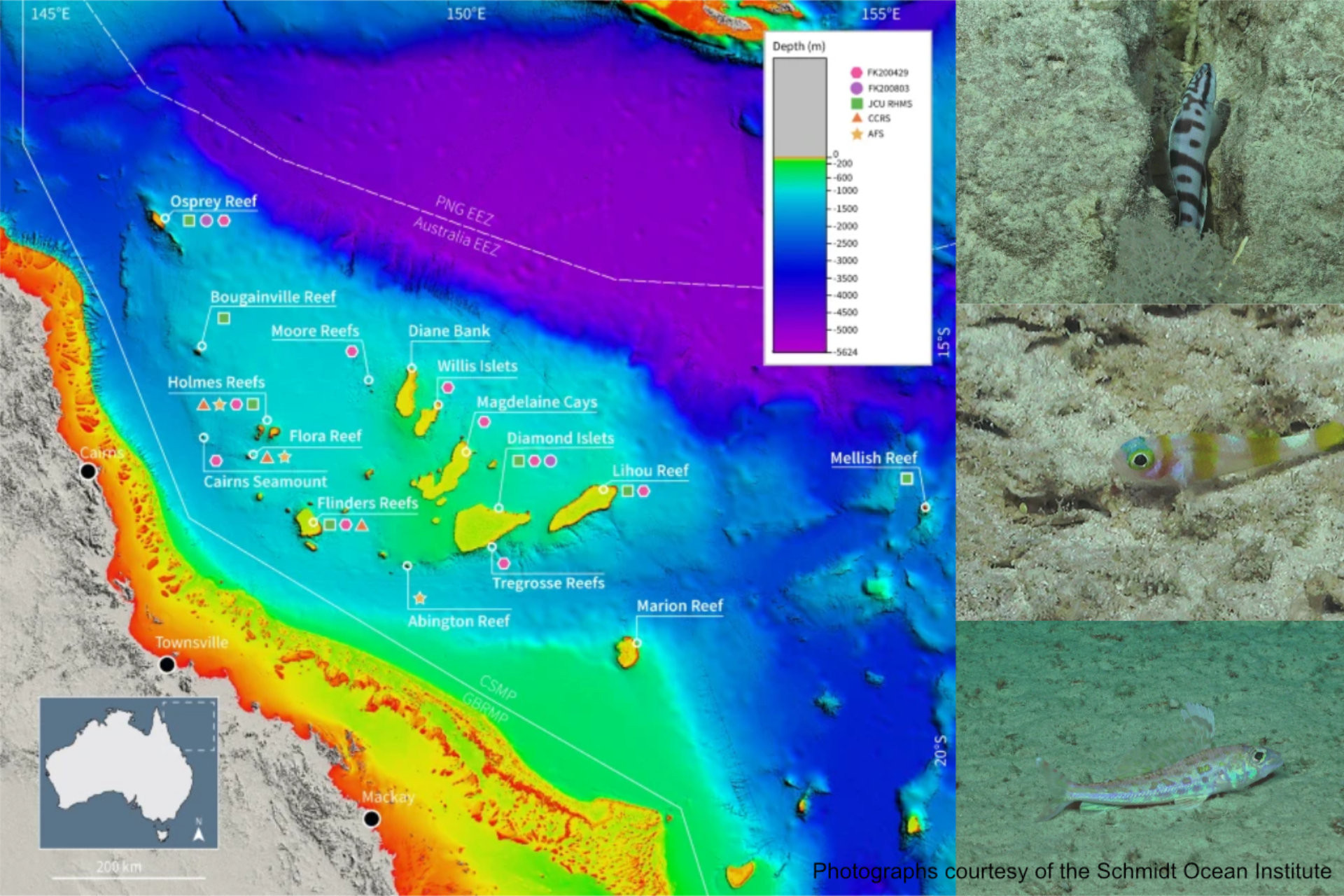New records of fishes from the Coral Sea Marine Park, Australia

Overview and Discoveries
Australia’s Coral Sea Marine Park (CSMP), spanning nearly 1 million km², is one of the world’s largest marine protected areas, but its deep-reef fish biodiversity remains poorly documented due to its remote location and depth limitations. Recent explorations using remotely operated vehicles (ROVs) by the Schmidt Ocean Institute and other research bodies have added significantly to scientific knowledge. The study documented 62 new fish records from 26 families, including 45 new species for Australia, 4 for the Southern Hemisphere, and 21 potentially new to science. These findings highlight the park’s untapped biodiversity and underscore the importance of integrative approaches combining underwater imagery with physical specimen collection.
Challenges and Methods
The CSMP’s vast area, complex habitats, and inaccessibility below 30 meters have limited biodiversity studies, particularly in mesophotic and rariphotic ecosystems. Traditional scuba diving and institutional regulations restrict deeper exploration. However, advancements in technology, such as ROVs and baited remote underwater video systems (BRUVs), along with contributions from commercial aquarium collectors, have expanded species discovery and documentation. Specimens and imagery were collected using rebreather diving, hand nets, and non-invasive video methods, and were cataloged across multiple museums. These approaches have provided valuable new data, though limitations remain in identifying small or cryptic species without extractive methods.
Species Patterns and Data Insights
The survey found that deep-water families like Anthiadidae and Labridae dominated the new records, with species richness increasing with depth. Most new species (96.8%) were recorded below 30 meters, supporting previous findings that deeper reefs hold distinct and underexplored assemblages. Visual survey methods tended to favor colorful or conspicuous species, while cryptic families like Gobiidae and Apogonidae were underrepresented due to the absence of physical specimen collection. The study emphasizes the need for varied and extractive methods, including ichthyocides, to properly assess the biodiversity of these hidden reef ecosystems.
Biogeographic Findings and Endemism
The study identified species from a range of biogeographic regions, notably the Western Pacific, Indo-West Pacific, and broader Pacific Ocean. Findings support the stepping-stone hypothesis, suggesting that Coral Sea seamounts facilitate fish dispersal across the Indo-Pacific. However, challenges in assigning faunal affinity and endemism remain due to incomplete data and visual survey limitations. Compared to previous studies using trawling methods, this research underrepresents endemic species but offers an important baseline. Overall, the study calls for more extensive and diverse sampling efforts to deepen our understanding of fish diversity in the CSMP and adjacent waters. To learn more, read Yi-Kai Tea and other scientists’ paper at https://link.springer.com/article/10.1007/s00338-025-02664-3#:~:text=Gill%20et%20al.,new%20records%20for%20the%20CSMP.